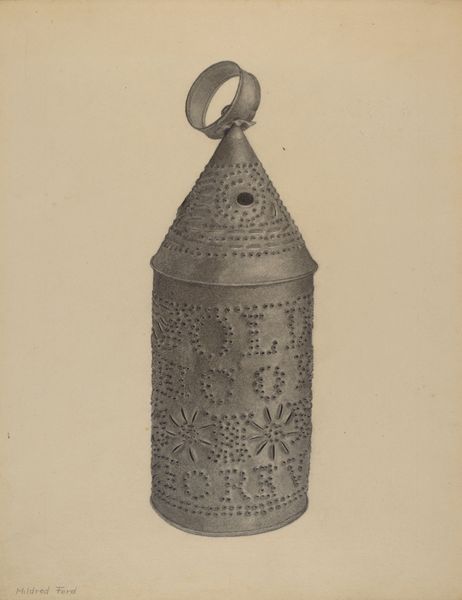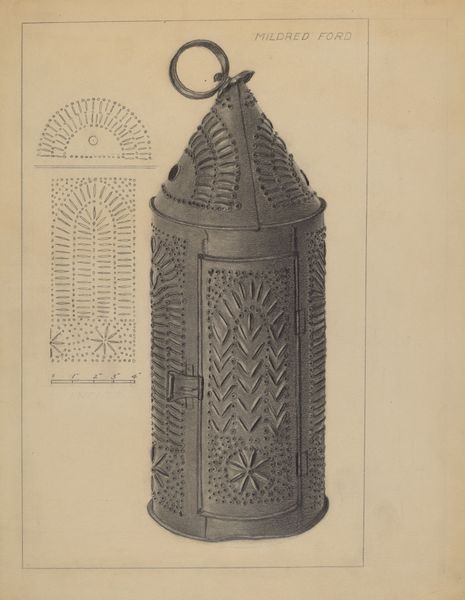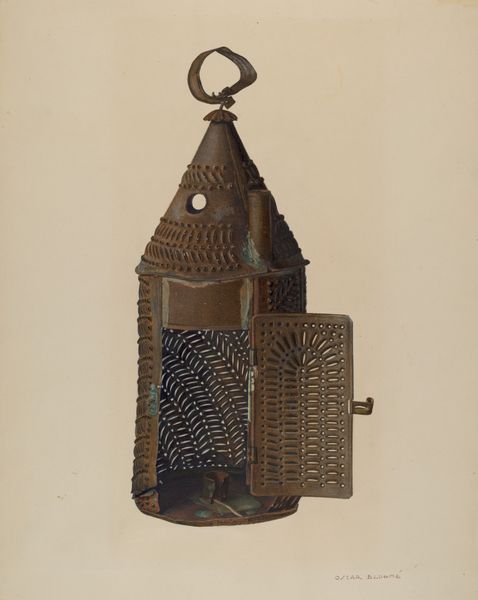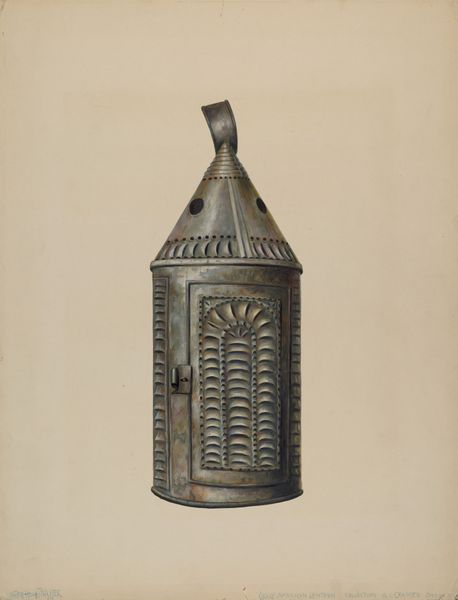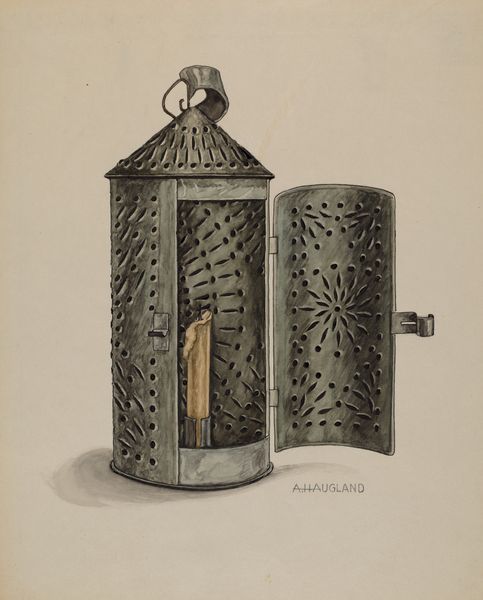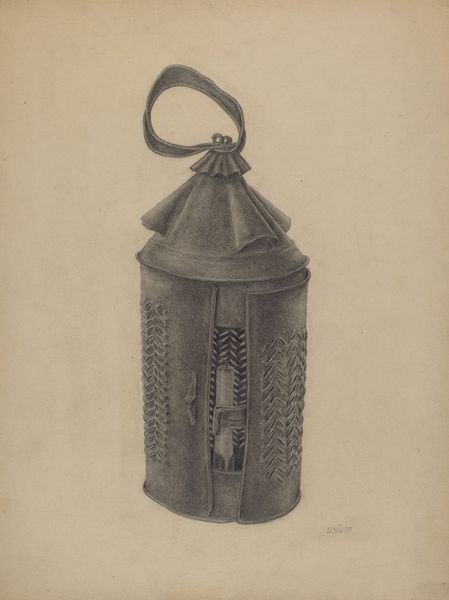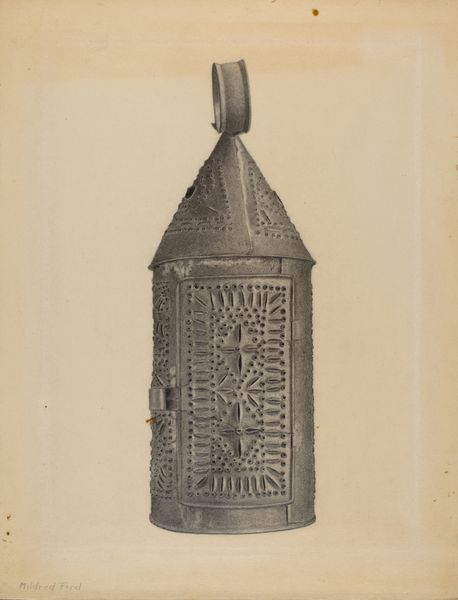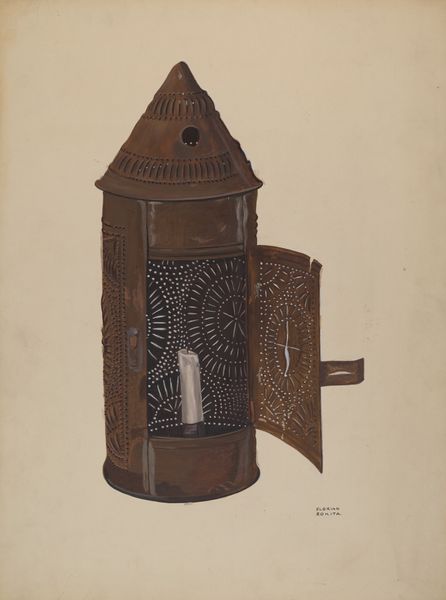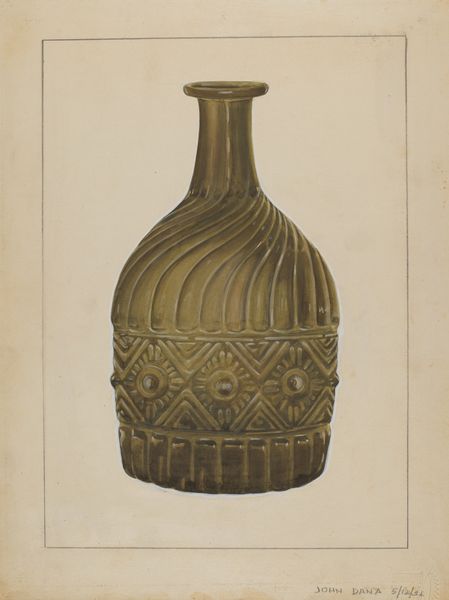
drawing, pencil
#
drawing
#
charcoal drawing
#
pencil drawing
#
pencil
#
graphite
#
realism
Dimensions: overall: 35.5 x 24.3 cm (14 x 9 9/16 in.)
Copyright: National Gallery of Art: CC0 1.0
Editor: This is Rose Campbell-Gerke's "Lantern," created sometime between 1935 and 1942. It's a drawing done with pencil and charcoal, and I find the detail work incredibly impressive, almost photorealistic. What draws your eye when you look at it? Curator: It's interesting to consider the labour embedded within this image, isn't it? Think of the process involved in crafting an actual lantern like this—the shaping of the metal, the careful punching of the decorative holes. Campbell-Gerke meticulously recreates this labour through her own drawing process, echoing the craft. How does this duplication of effort, this *representation* of manufacturing, affect our understanding of the object itself? Editor: I suppose it elevates a simple, functional object to something worthy of artistic attention, highlighting the skill involved in making even everyday things. But why choose a lantern? Curator: Exactly! The choice speaks volumes. Consider the context: the Depression era. Everyday objects like lanterns become valuable, representing practicality, resilience, even a source of light during difficult times. It shifts the focus from mass-produced, consumerist items to handcrafted, durable goods. Does it change how you view the lantern itself now? Editor: It does. I see it less as just a light source and more as a symbol of resourcefulness and a tangible link to a specific time and place, and to the individual craftsmanship that created it. Thank you! Curator: And I see that the very act of drawing this ordinary object calls attention to the value of craftsmanship and the often-overlooked beauty of utilitarian design in an era of mass production. Thanks for prompting that consideration.
Comments
No comments
Be the first to comment and join the conversation on the ultimate creative platform.

